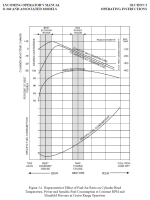I’m looking for input on leaning with the Advanced flight system EFIS. I’m including my aircraft setup and flight background.
RV6, IO 320, CS prop, CHT and EGT monitoring.
Ive got a lot of experience in normally aspirated and turbo motors but for the most part it has been jets and turboprops for a long time. Most of the recips I flew had no or poorly calibrated gauges so we operated accordingly. This is really the first recip I’ve flown with complete and calibrated gauges.
RV6, IO 320, CS prop, CHT and EGT monitoring.
Ive got a lot of experience in normally aspirated and turbo motors but for the most part it has been jets and turboprops for a long time. Most of the recips I flew had no or poorly calibrated gauges so we operated accordingly. This is really the first recip I’ve flown with complete and calibrated gauges.









